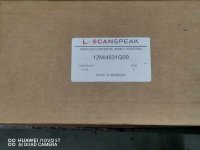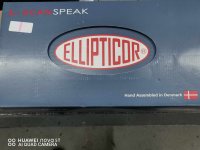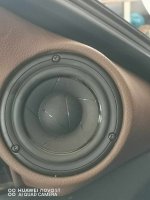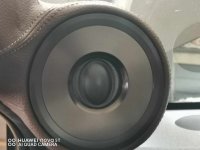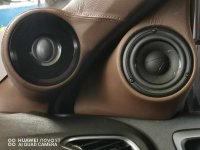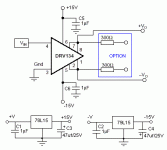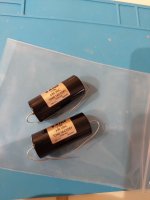Some time ago I had posted a thread about adjusting a St-S370 Sony tuner. At that time, the unit would show "100.00MHz" and in reality it would "tune" to 98.50MHz, which I had "fixed" with NULL adjustment. Unfortunately after some months of not using the unit the same problem re-appeared: the unit would not light the "TUNED" indication, no stereo indication, no auto-tuning and no RDS. I had read that gravity sometimes was the cause, but I realized that in my case it was not the problem (as this time i had to turn it even "lower" to re-align). Also it was VERY temperature sensitive (on a hot evening it would not "TUNE" or auto-tune, if it was adjusted the previous cold morning).
The solution (so far) was found by accident when trying to solve a problem of another Sony tuner (St-sa5es this time). I came across a
german page in which the solution was described as being a problematic capacitor soldered inside the legs of the T252 (NULL adjustment can). When I unsoldered it to access the capacitor, and tried to remove the metal can cover, the capacitor was desintegrating in my hands, and in the end it broke literally in dust, with a simple "touch" of a plastic screwdriver. I believe breaking it is the best way to remove it as the plastic of the component is also very old and sensitive to crack while removing the cover. This means I didn't have the chance to roughly measure the actual value of that capacitor, so I used 2x47pF C0G capacitors in parallel (I tried to be close to the 91 pF, the value mentioned in that webpage). I soldered the capacitors outside the can (in fact I soldered on top of the board, across a resistor which connects to the same pins where the capacitor was soldered, as I wanted to experiment with freezing and heating the capacitors). After that, a very slight NULL adjustment was needed (which indicated the faulty capacitor's value was not very different than the 94pF I used) and now everything seems to work as it should. No drift of frequency even when using hairdryer and then freezer on the capacitor (and the T252 can). I am now waiting to see what will happen in the long run, but I believe this is the definite fix, as before I had slight problems from day two (drifts when using the unit cold until it heated a bit and would "TUNE").
And now a bit of information I wanted to share about a ST-SA5ES I bought, which would not auto-tune or display RDS data. The first thing to try was again NULL adjustment. I then realized that the IFT272 (IF transformer which is the adjusting component in this unit) was stripped and it was impossible to move up or down the ferrite core by turning it! Also there are no specs anywhere on the internet, so my only chance was to buy a new plastic frame and wind the transformer myself, following the winding of the original).
So I ordered from aliexpress and empty container for the "stripped" can. The most relevant I could find was "K175 High Frequency Radio Transmitter Receiver Adjustable Inductance Coil Skeleton Kit Accessories" (5 "floors" in bobbin, 7+7x12 cm, core 3.2x5 , it is a bit taller than original).
I have to note that this has 5 pins (3+2) so I had to insert an extra pin on one side (original has 3+3 pins on)
How to wind it: (I used original thin wire which was unwound the reverse order from the instructions below):
(When I say "floor" I mean those showed on the next pic, where I number 5 is the topmost and 1 the lowest - NOTE: the pic below which I found has 4 "floors" instead of 5):
Side1 (with pins 1 to 3 from left to write): solder fine wire to left pin 1 and wind to the 3rd floor (middle of 5 floors) clockwise (looking from top) 4 times, then solder to middle pin 2, wind another 4 turns again to floor 3 and solder to the right pin 3.
Side2 (pins 3,4,5): solder fine wire to left pin 3 and wind 3 full turns clockwise (looking from top) to the lowest (1st floor), then another 3 turns to the 2nd floor, another 3 turns to the 4th floor (we skip 3rd floor) and finally 4 turns to the top (5th) floor, then solder to middle pin 4, then wind another 3 turns to the lowest 1st floor, 3 turns to the 2nd floor, 3 to the 4th and 4 turns to the 5th "floor", then solder to right pin 5.
After doing this, without using the external metal can enclosure, I could "tune" the discriminator with the iron core near the bottom of the bobbin (I used the new aliexpress core, not the smaller original). After adding the metal enclosure, the tuning point was close to the top. (When adding the supplied magnet cup, I could not fine tune as it was a over the top of the bobbin and I was out of turns - so I didn't use magnet cup).
Having done all that, I was able to get back tuning (TUNED and STEREO indications) and RDS recognition, and then I realized the tuner was 100kHz out (100.4 on display was actually 100.3), which I corrected very easily using the method in service manual (adjusting IFT251 to zero across the resistor that connects to pins 7 and 10 of chip 251).
As I checked it is also temperature stable, 3 weeks from adjustment nothing has "drifted", and also auto tuning works normally.
Sorry for the very long post, I just wanted to explain how to wind a "compatible" IFT272 as there is zero information on that on the internet (and this type of circuit is used in most top of the line Sony tuners - 707ES, 770ES etc.) I thought someone might need it in the future... And I wanted also to share the problem with temperature stability, which I think occurs quite frequently as those tuners are now old and many used similar cans from the same manufacturers so they might experience the same problems sooner or later.
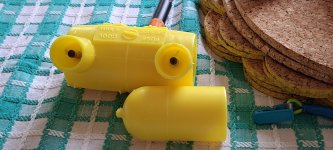
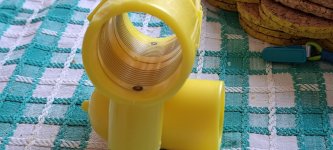
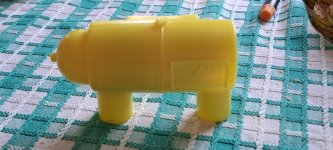
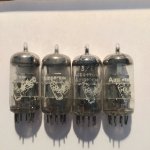
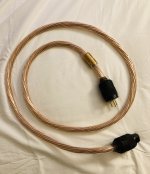
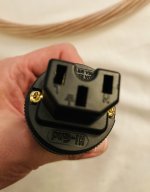
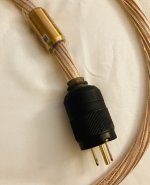
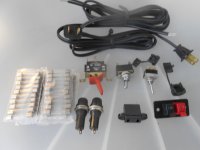
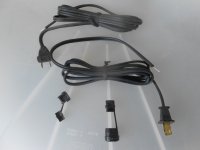
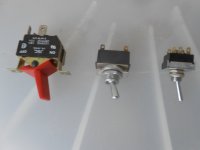


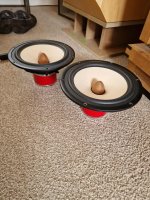
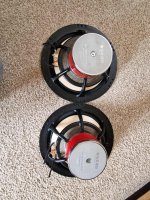
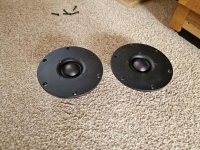
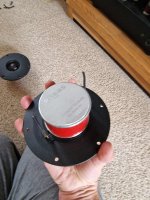
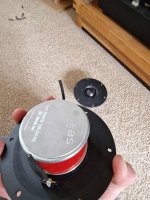
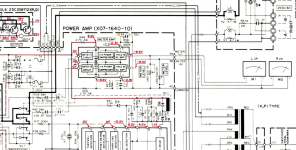
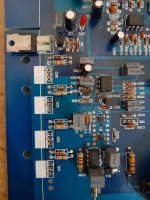
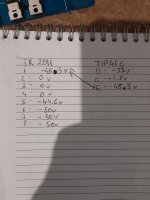
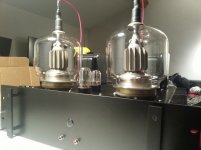
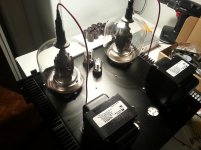
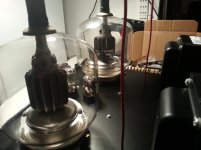
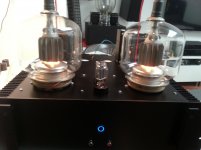
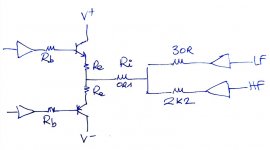
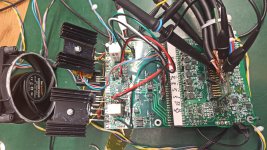
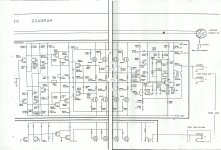
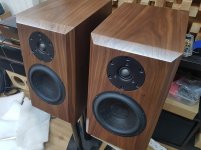
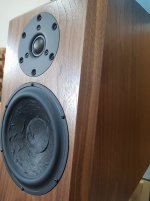
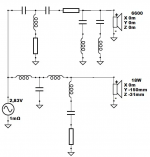

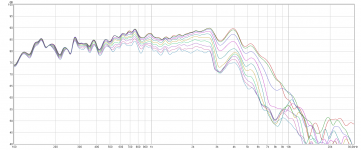
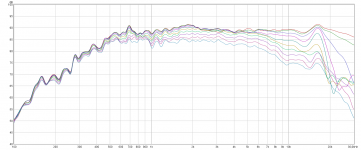
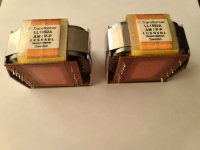
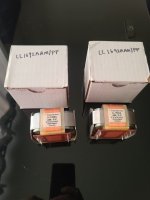
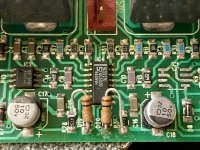
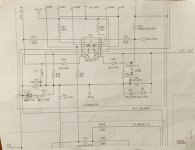

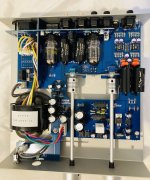
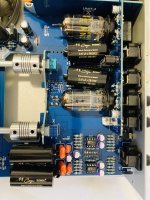

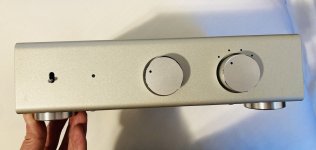
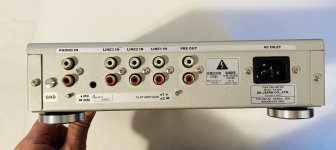
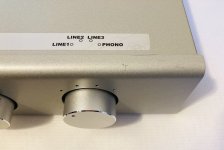
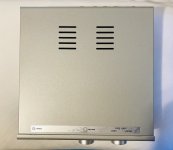
![PXL_20230919_214629906[1].jpg](/community/data/attachments/1122/1122935-f6aefa9d067d139741fde019d11737fe.jpg?hash=9q76nQZ9E5)
